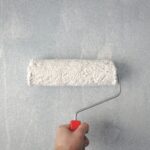A good night’s sleep is essential for overall health, but for people with asthma, nighttime can often be a challenging time. Dust mites, allergens, and poor air quality can trigger asthma symptoms, leading to disturbed sleep. Creating an asthma-friendly bedroom can significantly improve sleep quality and overall well-being. Here’s how you can make your bedroom a safe and comfortable haven.
1. Choose Hypoallergenic Bedding
Your bedding can be a major source of allergens like dust mites, which can trigger asthma symptoms. To minimize exposure:
- Use dust-mite-proof mattress and pillow covers.
- Wash your bed sheets, pillowcases, and blankets weekly in hot water (above 130°F or 54°C).
- Opt for hypoallergenic pillows and duvets made of synthetic materials instead of feather-filled options.
2. Keep Your Bedroom Free from Dust
Dust accumulation can worsen asthma symptoms, so keeping your bedroom clean is crucial:
- Dust all surfaces regularly with a damp cloth to prevent allergens from becoming airborne.
- Vacuum carpets, rugs, and upholstery frequently using a vacuum cleaner with a HEPA filter.
- Consider replacing carpets with hard flooring, such as wood or tiles, as they trap fewer allergens.
3. Maintain Optimal Humidity Levels
High humidity can promote mold growth and dust mites, both of which can trigger asthma. To maintain an ideal environment:
- Keep humidity levels between 30-50% using a dehumidifier if necessary.
- Use an air conditioner to reduce humidity and filter out airborne allergens.
- Avoid using humidifiers unless absolutely necessary, as excessive moisture can encourage mold growth.
4. Control Pet Dander
If you have pets, their dander can be a major asthma trigger. To reduce exposure:
- Keep pets out of the bedroom and off the bed.
- Wash pet bedding regularly and groom pets frequently to minimize shedding.
- Use a HEPA air purifier to capture pet dander and other airborne allergens.
5. Improve Indoor Air Quality
Clean air is crucial for asthma management. Here’s how to improve air quality in your bedroom:
- Use a high-quality HEPA air purifier to filter out allergens and pollutants.
- Keep windows closed during high pollen seasons and use air conditioning instead.
- Avoid using scented candles, air fresheners, or harsh cleaning products, as they can contain chemicals that irritate the airways.
- Regularly replace HVAC filters to ensure clean air circulation.
6. Eliminate Mold and Mildew
Mold spores can be potent asthma triggers. To prevent mold growth:
- Check for leaks and fix any water damage promptly.
- Clean damp areas, such as windowsills and bathrooms, with mold-resistant cleaners.
- Use mold-resistant paint on bedroom walls to prevent mold buildup.
7. Keep Your Bedroom Clutter-Free
Clutter can trap dust and allergens, making it harder to keep the room clean. To maintain an asthma-friendly space:
- Store items in closed containers instead of open shelves.
- Reduce stuffed animals, books, and decorative pillows, as they collect dust.
- Minimize heavy curtains and opt for easy-to-clean window coverings like blinds or washable drapes.
8. Choose Asthma-Friendly Furniture
Some furniture materials and finishes can release volatile organic compounds (VOCs) that irritate the airways. To minimize this risk:
- Choose furniture made of solid wood rather than particleboard or pressed wood, which can emit formaldehyde.
- Look for low-VOC or VOC-free paints and finishes.
- Allow new furniture to air out before bringing it into the bedroom.
9. Establish a Relaxing Bedtime Routine
Stress and poor sleep hygiene can worsen asthma symptoms. To ensure restful sleep:
- Maintain a consistent sleep schedule.
- Use blackout curtains to reduce light pollution and improve sleep quality.
- Keep electronic devices out of the bedroom to minimize blue light exposure before bed.
- Practice relaxation techniques like deep breathing or meditation to reduce nighttime asthma flare-ups.
Final Thoughts
Creating an asthma-friendly bedroom involves more than just keeping it clean; it requires a thoughtful approach to air quality, bedding, humidity control, and allergen reduction. By implementing these steps, you can reduce nighttime asthma symptoms and enjoy restful, uninterrupted sleep. Prioritizing an asthma-friendly environment will not only improve your sleep but also enhance your overall quality of life. Please share your experience in the asthma friend community.












